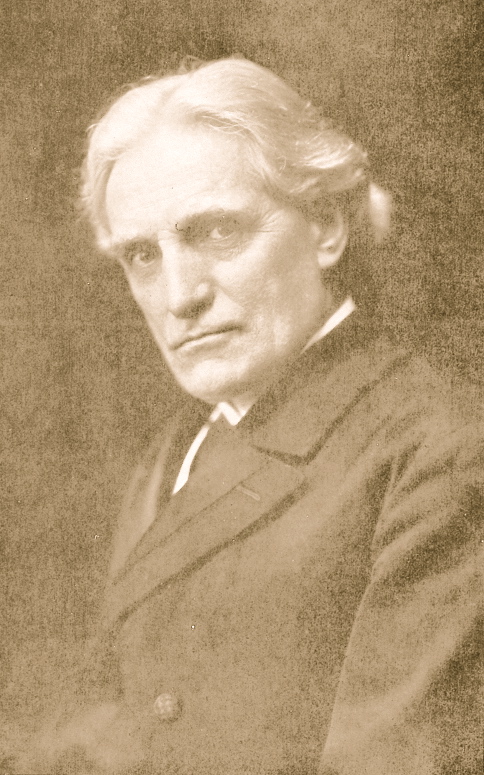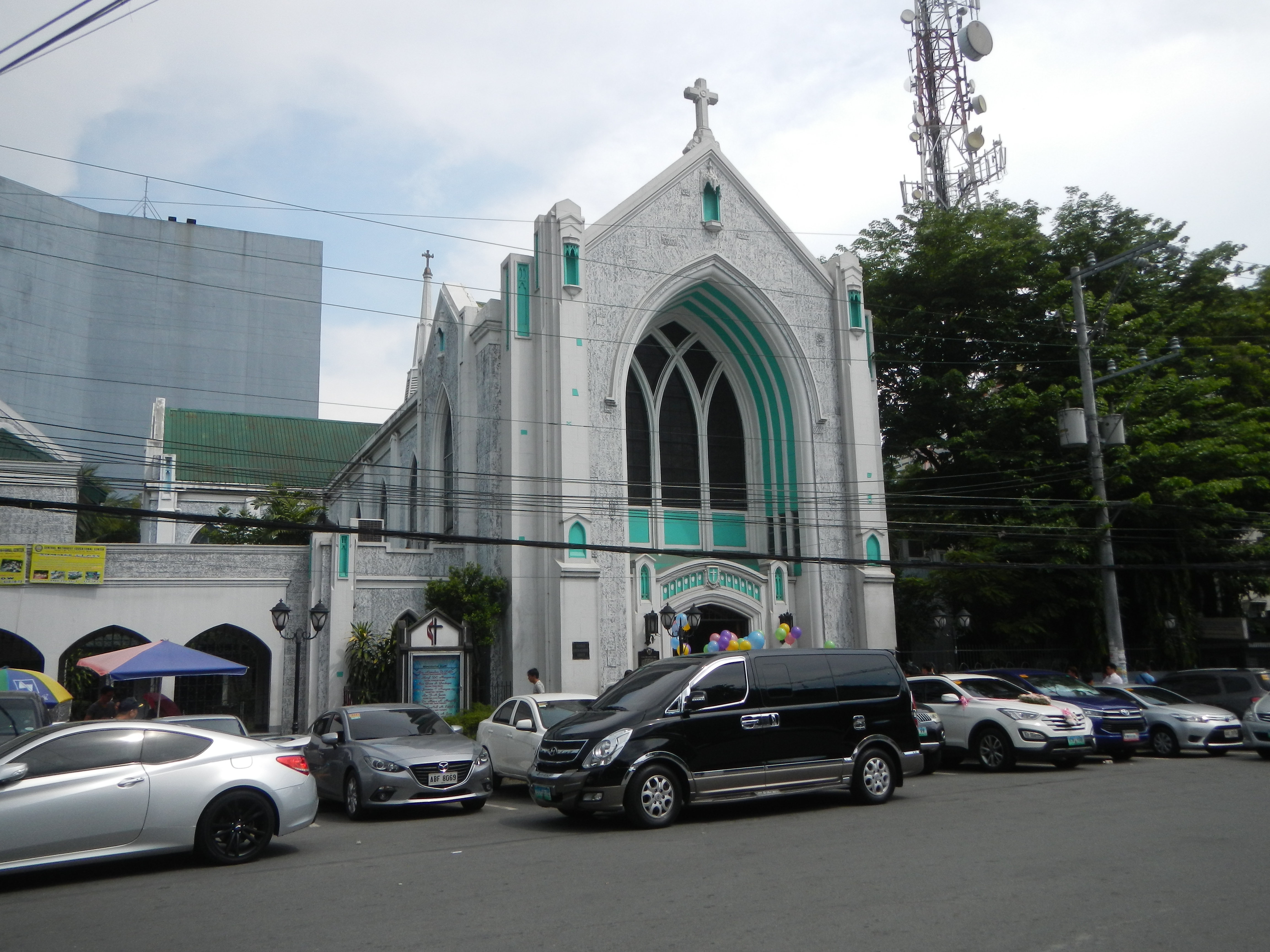|
Reformed Free Methodist
The Reformed Free Methodist Church (RFMC) was a Methodist denomination in the conservative holiness movement. History The formation of the Reformed Free Methodist Church is a part of the history of Methodism in the United States; it was founded in 1932 as a result of a schism with the Free Methodist Church spearheaded by Samuel E. West. The Reformed Free Methodist Church was one of the first denominations in the conservative holiness movement. Name The name of the denomination derives from the Church it left, the Free Methodist Church, as well as the word "Reformed", which does not refer to the theology of the denomination, but invokes the meaning of the word in plain English, "refined" or "improved". The Reformed Free Methodist Church upheld traditional Wesleyan-Arminian theology. Traditions Communicants of the Reformed Free Methodist Church sung hymns in corporate worship a cappella and wore plain dress (with black and white clothing preferred at the liturgy), in keeping with hi ... [...More Info...] [...Related Items...] OR: [Wikipedia] [Google] [Baidu] |
Tabernacle (Methodist)
In Methodism (inclusive of the holiness movement), a tabernacle is the center of a camp meeting, where Revival meeting, revival services occur. Tabernacles may be constructed in a cruciform-shaped fashion and are most often made of wood. Like the interior of many Methodist churches, in the center of the tabernacle is an altar upon which the Eucharist is consecrated; a pulpit stands near it and is used by preachers to deliver sermons. The area of the tabernacle housing the altar and pulpit is delimited by the mourner's bench. Surrounding the tabernacle itself are usually several cabins and/or tents, where people stay while attending the camp meeting. Gallery File:Martha's Vineyard Campground Tabernacle, at the heart of the Wesleyan Grove in Oak Bluffs.png, The tabernacle of Wesleyan Grove, also known as the Martha's Vineyard Campmeeting Association File:Tabernacle of Wesleyan Methodist Campground.jpg, The tabernacle of Allegheny Wesleyan Methodist Connection, Wesleyan Methodist ... [...More Info...] [...Related Items...] OR: [Wikipedia] [Google] [Baidu] |
Uniontown, Pennsylvania
Uniontown is a city in Fayette County, Pennsylvania, United States, southeast of Pittsburgh and part of the Greater Pittsburgh Region. The population was 10,372 at the 2010 census, down from 12,422 at the 2000 census. It is the county seat and largest city of Fayette County. History Uniontown was founded by Henry Beeson on July 4, 1776. This was, coincidentally, the same date the United States Declaration of Independence was adopted. The National Road, also known as the Cumberland Road, was routed through Uniontown in the early 19th century, and the town grew along with the road (now US 40). southeast of Uniontown is Fort Necessity, built by George Washington George Washington (February 22, 1732, 1799) was an American military officer, statesman, and Founding Father who served as the first president of the United States from 1789 to 1797. Appointed by the Continental Congress as commander of th ... during the French and Indian War (part of the international Seven Yea ... [...More Info...] [...Related Items...] OR: [Wikipedia] [Google] [Baidu] |
Holiness Movement
The Holiness movement is a Christian movement that emerged chiefly within 19th-century Methodism, and to a lesser extent other traditions such as Quakerism, Anabaptism, and Restorationism. The movement is historically distinguished by its emphasis on the doctrine of a second work of grace, generally called entire sanctification or Christian perfection and by the belief that the Christian life should be free of sin. For the Holiness Movement "the term 'perfection' signifies completeness of Christian character; its freedom from all sin, and possession of all the graces of the Spirit, complete in kind." A number of evangelical Christian denominations, parachurch organizations, and movements emphasize those beliefs as central doctrine. Beliefs Entire Sanctification The Holiness Movement believes that the "second work of grace" (or "second blessing") refers to a personal experience subsequent to regeneration, in which the believer is cleansed from original sin. It was actually ... [...More Info...] [...Related Items...] OR: [Wikipedia] [Google] [Baidu] |
Holiness Denominations
Sacred describes something that is dedicated or set apart for the service or worship of a deity; is considered worthy of spiritual respect or devotion; or inspires awe or reverence among believers. The property is often ascribed to objects (a " sacred artifact" that is venerated and blessed), or places (" sacred ground"). French sociologist Émile Durkheim considered the dichotomy between the sacred and the profane to be the central characteristic of religion: "religion is a unified system of beliefs and practices relative to ''sacred things'', that is to say, things set apart and forbidden." Durkheim, Émile. 1915. ''The Elementary Forms of the Religious Life''. London: George Allen & Unwin. . In Durkheim's theory, the sacred represents the interests of the group, especially unity, which are embodied in sacred group symbols, or using team work to help get out of trouble. The profane, on the other hand, involve mundane individual concerns. Etymology The word ''sacred'' desce ... [...More Info...] [...Related Items...] OR: [Wikipedia] [Google] [Baidu] |
Methodist Denominations In North America
Methodism, also called the Methodist movement, is a group of historically related denominations of Protestant Christianity whose origins, doctrine and practice derive from the life and teachings of John Wesley. George Whitefield and John's brother Charles Wesley were also significant early leaders in the movement. They were named ''Methodists'' for "the methodical way in which they carried out their Christian faith". Methodism originated as a revival movement within the 18th-century Church of England and became a separate denomination after Wesley's death. The movement spread throughout the British Empire, the United States, and beyond because of vigorous missionary work, today claiming approximately 80 million adherents worldwide. Wesleyan theology, which is upheld by the Methodist churches, focuses on sanctification and the transforming effect of faith on the character of a Christian. Distinguishing doctrines include the new birth, assurance, imparted righteousness, ... [...More Info...] [...Related Items...] OR: [Wikipedia] [Google] [Baidu] |
Methodist Denominations
This is a list of Methodist denominations (or list of Methodist connexions) including those affiliated with the World Methodist Council, as well as those which are not, the latter of which have been indicated with an asterisk. The denominations' relative sizes are not evident from this list. The list may not be comprehensive, but intends to be an accessible overview of the diversity and global scope of contemporary Methodism. This list also includes some united and uniting churches with Methodist participation. Some denominations may not have an exclusively Wesleyan heritage. List Africa * African Methodist Church, West Africa * African Methodist Church, Zimbabwe *African Methodist Episcopal Church, Central Africa * Bantu Methodist Church of Southern Africa *Nigerian Methodist Church * Kenyan Methodist Church *Methodist Church Ghana *Methodist Church of Southern Africa *Methodist Church in Zimbabwe * Methodist Church in Togo *Protestant Methodist Church in Benin * Protestant Me ... [...More Info...] [...Related Items...] OR: [Wikipedia] [Google] [Baidu] |
Fellowship Of Independent Methodist Churches
The Fellowship of Independent Methodist Churches (FIMC) is a Methodist denomination aligned with the conservative holiness movement that is based in the British Isles, with missions around the world. The history of the Fellowship of Independent Methodist Churches is a part of the larger history of Methodism in the British Isles, with the connexion forming as the result of a number of congregations departing both the Methodist Church in Ireland and the Free Methodist Church in 1973 due to what they perceived as the rise of Modernism in those denominations. The connexion is theologically conservative, aiming to uphold the original ethos of early Methodism. Though each congregation calls its own minister, a General Council of ministers and laypeople meets monthly to manage the work of the Fellowship of Independent Methodist Churches. Local congregations use the abbreviation "IMC" after their name, e.g. Omagh IMC, representing the full name Omagh Independent Methodist Church. The Fello ... [...More Info...] [...Related Items...] OR: [Wikipedia] [Google] [Baidu] |
Evangelical Wesleyan Church
The Evangelical Wesleyan Church, formerly known as the Evangelical Wesleyan Church of North America, is a Methodist denomination in the conservative holiness movement. The formation of the Evangelical Wesleyan Church is a part of the history of Methodism in the United States; its creation was the result of a schism with the Free Methodist Church in 1963. In 1969, it merged with the Midwest Holiness Association, which had also left the Free Methodist Church. The Evangelical Wesleyan Church was founded with a commitment to uphold the doctrine and standards of traditional Methodism. It has twenty-seven congregations. The Church publishes a periodical known as ''The Earnest Christian'' and its seminary is the Evangelical Wesleyan Bible Institute (EWBI) in Cooperstown, Pennsylvania. Much of the denomination's literature is printed by LWD Publishing. It holds a denomination-wide camp meeting at Summit Campground in Cooperstown, Pennsylvania and its General Conference at Camp Nysted i ... [...More Info...] [...Related Items...] OR: [Wikipedia] [Google] [Baidu] |
Tabernacle (Methodist)
In Methodism (inclusive of the holiness movement), a tabernacle is the center of a camp meeting, where Revival meeting, revival services occur. Tabernacles may be constructed in a cruciform-shaped fashion and are most often made of wood. Like the interior of many Methodist churches, in the center of the tabernacle is an altar upon which the Eucharist is consecrated; a pulpit stands near it and is used by preachers to deliver sermons. The area of the tabernacle housing the altar and pulpit is delimited by the mourner's bench. Surrounding the tabernacle itself are usually several cabins and/or tents, where people stay while attending the camp meeting. Gallery File:Martha's Vineyard Campground Tabernacle, at the heart of the Wesleyan Grove in Oak Bluffs.png, The tabernacle of Wesleyan Grove, also known as the Martha's Vineyard Campmeeting Association File:Tabernacle of Wesleyan Methodist Campground.jpg, The tabernacle of Allegheny Wesleyan Methodist Connection, Wesleyan Methodist ... [...More Info...] [...Related Items...] OR: [Wikipedia] [Google] [Baidu] |
The Alliance Review
The ''Alliance Review'' is a community-based newspaper in Alliance, Ohio, and nearby areas of Northeast Ohio. The paper publishes six days a week. History The ''Review'' was founded in 1888, and is currently owned by Gannett (formerly GateHouse Media), who acquired the newspaper in February 2017 from Dix Communications. References External links *KeySmart Review Alliance, Ohio Gannett publications Newspapers published in Ohio Newspapers established in 1888 1888 establishments in Ohio {{Ohio-newspaper-stub ... [...More Info...] [...Related Items...] OR: [Wikipedia] [Google] [Baidu] |
Alliance, Ohio
Alliance is a city in eastern Stark County, Ohio, United States. With a small district lying in adjacent Mahoning County, the city is approximately northeast of Canton, southwest of Youngstown and southeast of Cleveland. The population was 21,672 as of the 2020 census. Alliance was established in 1854 by combining three smaller communities. The city was a manufacturing and railroad hub for much of the 20th century and is also associated with the state flower of Ohio, the scarlet carnation, and is known as "The Carnation City". The University of Mount Union, a private liberal arts college established in 1846, is located in Alliance. Most of the city is part of the Canton–Massillon metropolitan area. History Alliance was founded in 1854 by the merger of three smaller communities called Williamsport (formed in 1827), Freedom (formed in 1838), and Liberty (formed in 1850 to act as a station and support hub for the Cleveland and Pittsburgh Railroad). A fourth community, Mount U ... [...More Info...] [...Related Items...] OR: [Wikipedia] [Google] [Baidu] |



.jpg)

